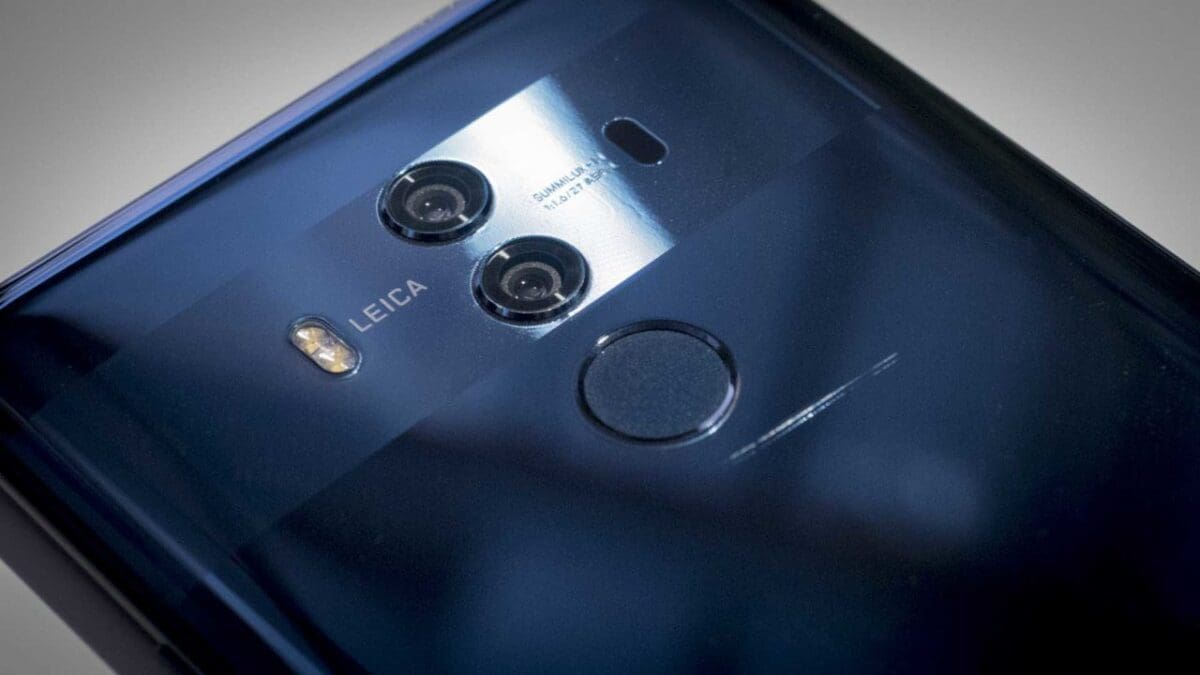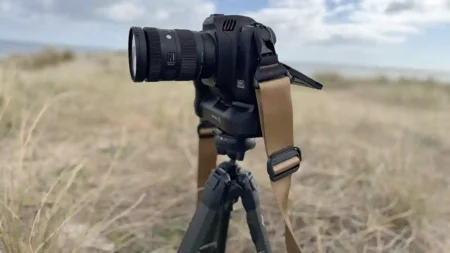Huawei and Leica have collaborated to give the Mate 10 Pro a high-quality camera system that makes use of AI technology to deliver great results in a range of conditions. In addition to the automatic shooting option that is bound to be most widely used, there are advanced controls and the ability to record raw files in addition to jpegs if you want.
For Huawei Mate 10 Pro Camera
- Dual-camera system
- Large aperture
- Leica involvement
Against Huawei Mate 10 Pro Camera
- Screen tends to oversaturate colours
- No MicroSD card port
- The supplied case is needed to give better grip
The Mate 10 Pro is the flagship phone in Huawei’s 2018 line-up and runs on Android Oreo. It has a 6-inch screen with a resolution of 2160×1080 pixels. Most importantly for photographers, however, it has a dual camera system developed by Leica.
The Huawei Mate 10 Pro camera system has been co-engineered by Huawei and Leica. It features two camera units, each with a Leica Summilux-H lens with a maximum aperture of f/1.6 and an effective focal length of 27mm.
Behind each lens lies a different sensor, one is a 12Mp device with an RGB filter array to capture colour images while the other is a 20Mp unit that records monochrome (black and white) information.
The Mate 10 Pro native camera app has a Pro mode that gives access to key controls including metering mode, sensitivity (ISO), shutter speed, exposure compensation, focus mode, and white balance.
The Mate 10 is available with a maximum storage capacity of 64GB, whereas the Mate 10 Pro has up to 128GB storage. It’s also possible to shoot 4K (3840×2160 pixel) movies at 30 frames per second in MP4 format.
Huawei has introduced a new processing engine for the Mate 10 series, the Kirin 970. This allows faster, more complex algorithms to be applied and enables the camera to recognise objects quickly and adjust settings and processing parameters accordingly.
Build and Handling
Huawei has given the Mate 10 Pro a full-view display with a 6-inch screen that has an 18×9 ratio. Despite having a larger screen than the Mate 9, the overall size of the Mate 10 Pro remains the same due to reduced bezel size.
The phone comes with a cover, which is practical for maintaining grip, as the device is quite slippery without it. It features a glass finish on both the back and front, with the glass (protected by Gorilla Glass) curving around the edges, providing a premium look and feel. For photographers who might encounter various weather conditions, the Mate 10 Pro is IP67 rated for water and dust resistance.
The screen’s vibrancy and sharpness make images stand out, although they tend to appear oversaturated and warm, a characteristic that normalizes on a calibrated display.
In terms of operation, swiping the small bar at the bottom of the camera app screen upwards accesses the Pro mode, allowing adjustments to settings like shutter speed, exposure compensation, and white balance. The standard ‘Photo’ mode enables automatic subject detection with corresponding mode indication (e.g., portrait, food). Swiping right reveals different scene modes, while swiping left opens the Advanced Settings for options like raw file shooting.
Aperture mode is activated by tapping the aperture icon, enabling focus adjustment on different parts of the image during review, with a sliding control at the bottom to modify aperture and depth of field, affecting the sharpness zone in the image.
Huawei Mate 10 Pro Performance
From the outset, I was impressed by the images from the Mate 10 Pro, they look good on the phone screen – although as mentioned earlier some look oversaturated and warm. Transfer the images to your computer and look at them on a properly calibrated screen and you’ll see the oversaturation and warmth is an issue with the phone’s display rather than the images themselves.
Even in the low light conditions, the camera also manages to get most subjects sharp quickly, probably helped by the extra light flooding through that large aperture.
Low sensitivity (ISO) images have an impressive amount of detail that should please even discerning photographers looking for an alternative to a dedicated camera.
High ISO shots exhibit softening of some details as a result of noise reduction being applied. If you view them on a computer screen, ISO 3200 images look almost like hyperrealist paintings, there’s a very good impression of detail but there are areas that look a bit too uniform. The raw files have more detail but there’s a fine texture of luminance noise visible. Both are generally very acceptable, but I’d defer to the raw files so give me a bit more control over the noise/detail visibility in the processing.
I’d have no hesitation in setting the Mate 10 Pro to the Auto ISO setting and letting it control the sensitivity (ISO value).
Shooting raw files means you don’t need to worry too much about the white balance setting, but the vast majority of images shot with the Mate 10 Pro will be captured using the Auto setting. That’s fine because it copes with most situations well, keeping some of the atmosphere of artificial lighting.

Standard Shooting
In its standard Photo mode, the Mate 10 Pro did a good job of recognising most subjects I pointed it at during my testing. When my dog was in the frame a dog icon usually appeared and it seemed to find it easy to distinguish between foliage and flowers, or food.
I am particularly impressed by the results in Monochrome mode, which had nice contrast and a good tonal range. That will be Leica’s experience shining through.
The HDR and Light painting modes also produced some respectable results and offer some fun opportunities.
Should you need extra illumination, there’s a dual LED flash available. This produces a more flattering effect than some other phone flash systems, but it’s limited by its proximity to the lens.
The video results are also good, with a nice bright image good detail levels and the stabilisation system taking out the worst of the jitters.

Huawei Mate 10 Pro Aperture mode
Aperture mode works very well with only the odd artefact here and there along the edges of the sharp zone. Experienced photographers may also recognise that the fall-off in sharpness is sudden, giving away the fact that it’s been done by processing magic rather than physics, but in many instances, the results are convincing.
The sharp zone of the Aperture mode images lacks the detail of standard images, but they look fine at normal viewing sizes and would make acceptable 5×7-inch prints or even 10×8-inch prints.
Huawei and Leica have managed to create a nice bokeh effect at wide aperture settings.




Selfie-Camera
With a pixel count of 8million, the f/2.0 selfie camera is never going to match the detail of the 20Mp main camera(s). But it does its job well, delivering fairly flattering results in most situations.
[/nextpage] [nextpage title=”Images” ]
Huawei Mate 10 Pro Sample Photos
We’ve shot with the Huawei Mate 10 Pro in a range of different conditions and scenes. Below are a few of our favourites, along with a Flickr gallery with more images. Follow the link to browse and download full resolution images.







[FAG id=51042]
Verdict
The Huawei Mate 10 Pro camera performs very well, with quick focusing and sharp detailed images at lower ISO settings. Even at its highest setting of ISO 3200, the image quality remains good. The Aperture mode is effective, providing a pleasing out-of-focus background in photos.
While some images may appear overly vibrant, this issue is typically related to the phone’s screen rather than the photos themselves. Once viewed on a computer or shared on social media, the images are likely to be satisfactory.
If you are an Android user or considering a switch from iOS, and camera quality is a top priority for you, the Huawei Mate 10 Pro is a strong contender. Although this review focuses on the camera, other features of the phone are also commendable, even though they are not the main focus of this assessment.



